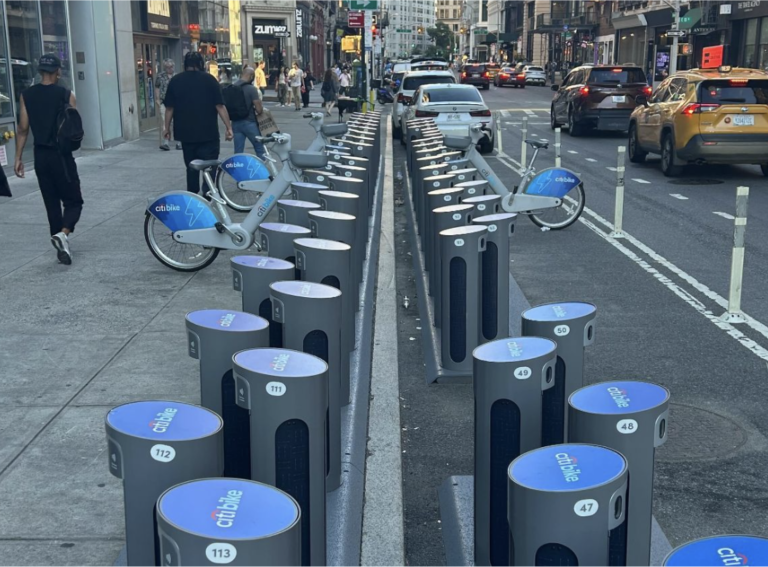Author: Yen Hsu, VP of Sales at Navee Technology
In the modern era, sustainable growth is not just a buzzword but a necessity for any industry aiming to thrive in the long term. The micromobility sector is no exception. My insights into sustainable fleet growth are rooted in a fundamental approach that balances economic viability with innovative capability. Here I want to share what I believe are some essential strategies to achieve this balance, focusing on the integration of technology, efficient resource management, and addressing the challenges of upgrading product lineups to more sustainable options.
Capitalise on the tech
Technology is at the forefront of sustainable fleet management. By leveraging advancements in telematics, fleet managers can monitor vehicle performance, user behaviour and consumption in real-time.
This data-driven approach enables predictive maintenance, where regular maintenance schedules based on real-time data can prevent breakdowns, extend vehicle lifespan, and reduce the environmental impact of sudden repairs. Additionally, optimised rebalancing through GPS and route optimization software can significantly cut down on cold zone areas by identifying the most efficient zones, avoiding battery drainage and reducing idle times. With advanced AI camera modules, the e-scooter can provide features such as sidewalk detection, pedestrian protection, and park zone notifications. These capabilities decrease the likelihood of accidents and improve the speed of returns, ultimately increasing the frequency of usage.
Conserve your resources
Efficient resource management is critical for sustainable fleet growth. This involves battery management, load optimization, material protection and lifecycle assessment.
Implementing battery management systems (BMS) to monitor and control battery usage encourages practices that lead to substantial power savings and longer use cases. Ensuring that vehicles operate at optimal load capacity increases the number of trips per user before a battery swap. This is achieved through power reserve technology in sleep mode, which maximises battery power when the e-scooter is inactive, thereby extending its operational efficiency. To safeguard the fleet from harsh environments, the materials of the e-scooters should be protected with IPX7 waterproofing. Additionally, many cables should be double-wrapped to prevent rust, ensuring durability and longevity. Conducting lifecycle assessments to determine the total cost of ownership (TCO) impact of a vehicle from manufacturing to disposal helps in making informed decisions about when to replace vehicles to ensure optimal sustainability.
The vehicle upgrade
One of the significant hurdles in achieving sustainable fleet growth is the difficulty operators face in upgrading their product lineups. All vehicles will inevitably reach the end of their first life and the upgrade comes with a number of costs. First there is the switch cost and the initial investment required to transition to a new fleet, which can be substantial. At Navee, we strive to mitigate these costs by offering tailored solutions that meet operator requirements. Operators may also be reluctant to switch due to sunk cost – previous investments in their current fleets. We work to demonstrate the long-term economic and environmental benefits of transitioning to more sustainable options. These sustainable options include using partially recycled materials, incorporating interchangeable spare parts between models, and reducing the overall weight of the vehicle. Additionally, the perceived risks and potential lost opportunities during the transition period, or opportunity cost, can deter operators. By providing comprehensive support and showcasing successful case studies, we aim to alleviate these concerns.
Uncertain regulation
Navigating the complex landscape of regulations is essential for sustainable growth. Operators should stay updated with national and international regulations regarding weight limits, speed limits, parking zones, and vehicle specifications to ensure compliance and avoid potential fines. Engaging in strategic partnerships with stakeholders, including manufacturers, battery suppliers, and regulatory bodies, can lead to innovative solutions and shared best practices for sustainability. Being proactive in advocating for policies that support sustainable practices, such as subsidies for clean energy vehicles or tax breaks for companies meeting certain environmental standards, is also crucial.
Sustainable fleet growth is a multifaceted challenge that requires a holistic approach. By focusing on the fundamentals – embracing technology, managing resources efficiently, and complying with policies – manufacturers like Navee can support operators in overcoming this challenging operator business model.
However, the reluctance to change and the focus on immediate economic gains over long-term sustainability can hinder progress. Addressing these barriers is crucial not only for the longevity of individual fleets but also for the future of the micromobility industry. A sustainable future in this sector remains uncertain without a collective commitment to balancing economic and innovation priorities.











